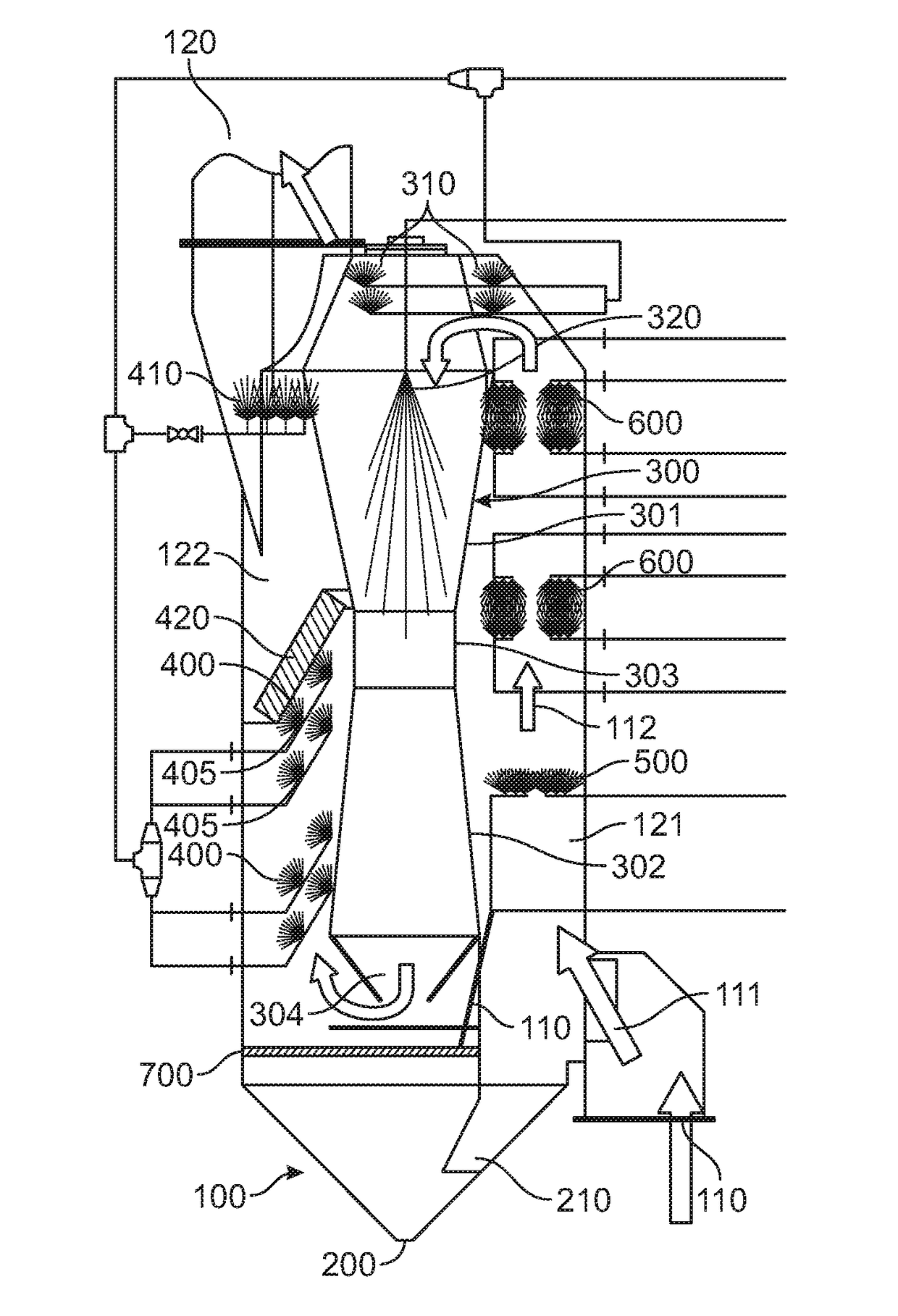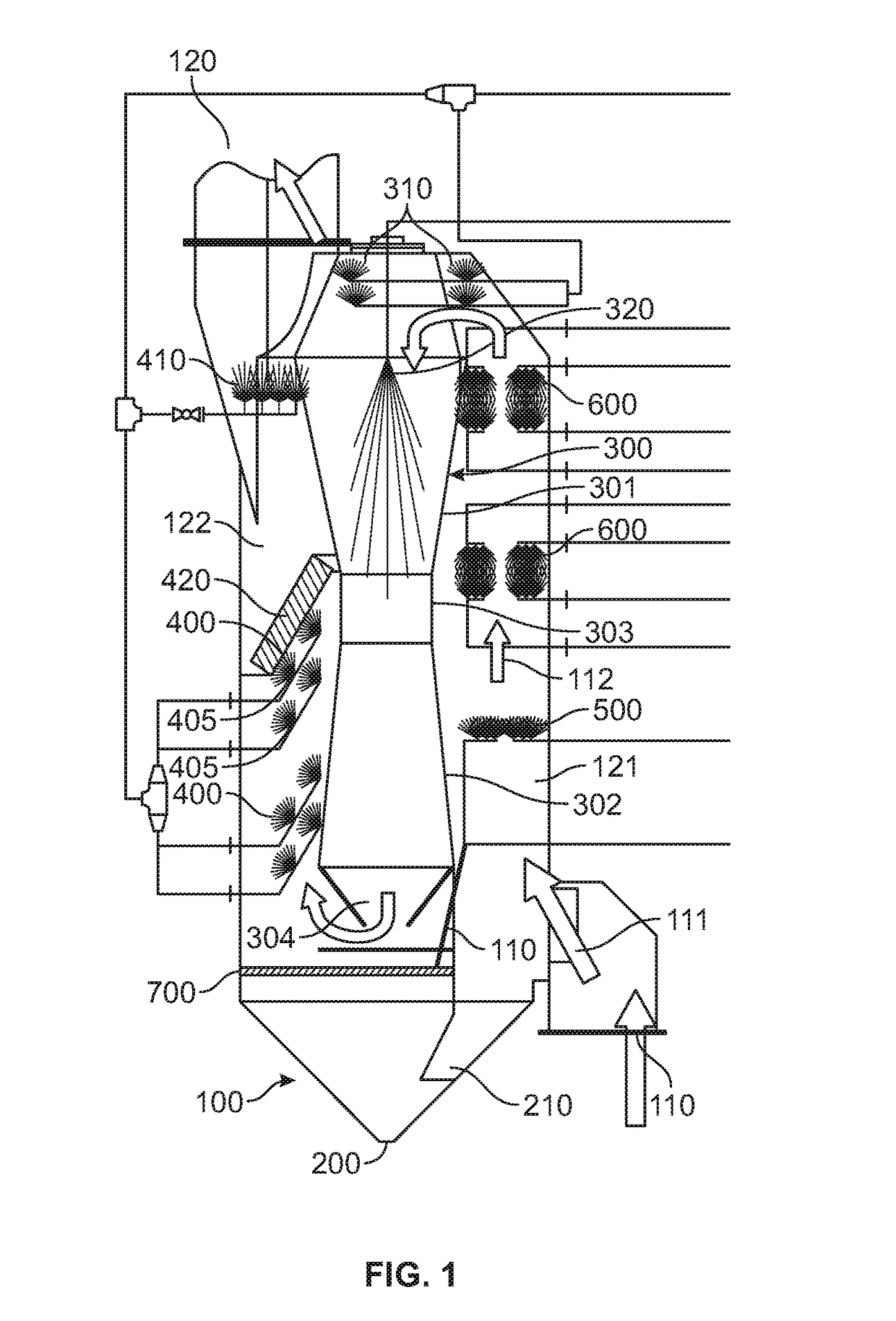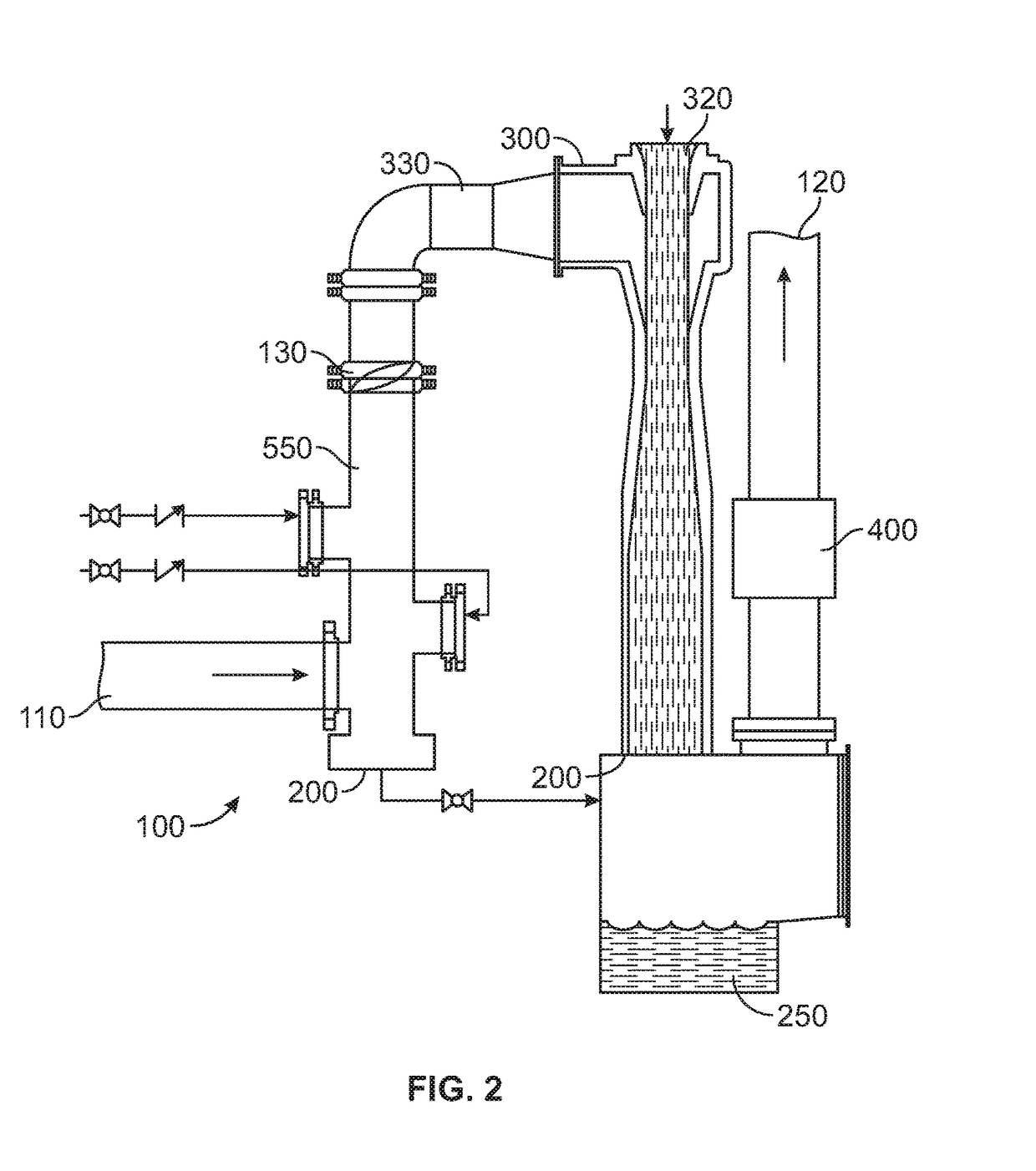Marine exhaust gas cleaning system
a technology of exhaust gas cleaning and cleaning system, which is applied in the direction of chemistry apparatus and processes, separation processes, and dispersed particle separation, etc., can solve the problems of increasing the cost of such fuels, introducing significant costs to ship owners, and lowering the temperature generally increases the solubility of gases in liquids
- Summary
- Abstract
- Description
- Claims
- Application Information
AI Technical Summary
Benefits of technology
Problems solved by technology
Method used
Image
Examples
example 1
[0174]Three scrubbing performance tests were carried out using the marine exhaust gas scrubbing device of the present invention affixed to a 600 kW diesel engine. In Trial 1, the scrubbing device was run for 108 minutes at 100% engine load with an engine speed of 1750-1800 RPM. During that time the quencher and venturi were in operation with a butterfly valve between the quencher and venturi (to create a turbulent mixing zone) in either a fully open (0°), or partially closed (22° or 45°) position. In Trial 2, the scrubbing device was run for 35 minutes at 100% engine load with an engine speed of 1800 RPM. After 14 minutes, the butterfly valve was closed to 22° and after 20 minutes the quencher was activated. In Trial 3, the scrubbing device was run for 108 minutes at 100% engine load with an engine speed of 1800 RPM. After 13 minutes the venturi was activated; after 18 minutes the quencher was activated; after 49 minutes the venturi was deactivated; after 58 minutes the butterfly va...
example 2
[0178]In another series of tests, the effectiveness of SO2 reduction as a function of venturi flow was assessed. In a first test (Test B) using a diesel engine operating at full load at an engine speed of 1600 RPM, SO2 concentration of the exhaust stream was measured at the exhaust manifold and the venturi outlet. Over a period of 17 minutes the venturi flow rate was reduced from 180 gallons per minute (gpm) to 0 gpm (SeeFIG. 6). In a second test (Test F) using a diesel engine operating at full load, SO2 concentration of the exhaust stream was measured at the exhaust manifold and the venturi outlet. Over a period of nine minutes the venturi flow rate was reduced from 180 gpm to 0 gpm (See FIG. 6).
[0179]One embodiment of the present disclosure resulted in an increase in the scrubbing efficiency of the system. This was accomplished by adding chemical scrubbing capability to the Quencher, the last of the three quencher nozzles concurrently sprays NaOH directly into an adjustable butter...
example 3
[0180]In another test of an embodiment of the marine exhaust gas scrubbing device of the present invention, the device was run at 75% engine load at an engine speed of 1750 rpm. Quenching fluid was emitted from the quenchers at 1.5 gpm at a pressure of 60 psi. The SO2 level at the device inlet was measured at 1000 ppm and at the device outlet was measured at 0 ppm with a CO level of 301 ppm, a NO level of 633 ppm and a NO2 level of 2443 ppm.
PUM
| Property | Measurement | Unit |
|---|---|---|
| temperature | aaaaa | aaaaa |
| angle | aaaaa | aaaaa |
| angle | aaaaa | aaaaa |
Abstract
Description
Claims
Application Information
 Login to View More
Login to View More - R&D
- Intellectual Property
- Life Sciences
- Materials
- Tech Scout
- Unparalleled Data Quality
- Higher Quality Content
- 60% Fewer Hallucinations
Browse by: Latest US Patents, China's latest patents, Technical Efficacy Thesaurus, Application Domain, Technology Topic, Popular Technical Reports.
© 2025 PatSnap. All rights reserved.Legal|Privacy policy|Modern Slavery Act Transparency Statement|Sitemap|About US| Contact US: help@patsnap.com



